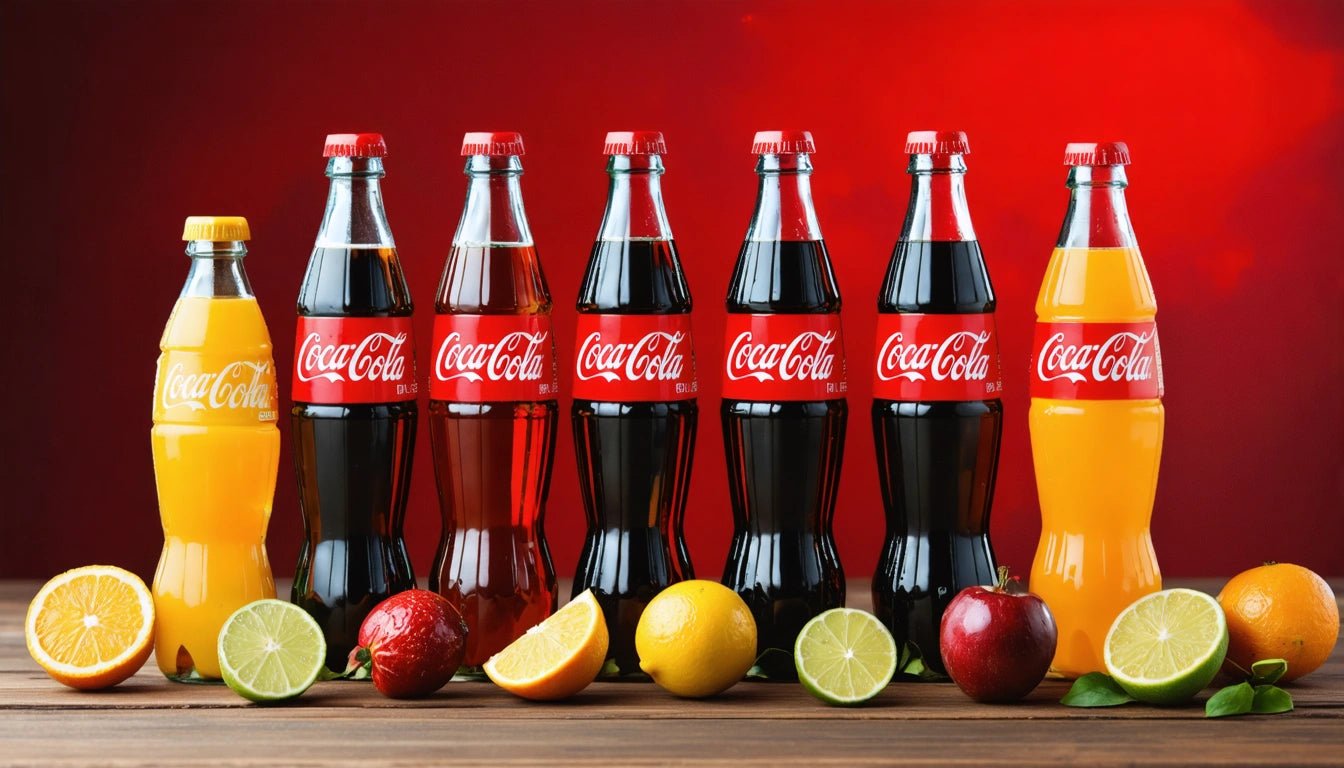Table of Contents
- Coca-Cola Bottle History: The Birth of an Icon
- Coke Bottles Over the Years: Design Evolution and Innovation
- Gatorade Bottles Over the Years: From Functionality to Identity
- Most Valuable Old Bottles: Collectors' Treasures
- What Does Coke Own: The Expanding Beverage Empire
- The Impact of Iconic Bottle Design on Modern Packaging
The Evolution and Legacy of Iconic Beverage Bottles: From Coca-Cola to Gatorade
Iconic beverage bottles have shaped consumer culture and brand recognition for over a century. From the distinctive curves of Coca-Cola to the ergonomic grip of Gatorade, these containers have become more than vessels for liquid refreshment. They represent brand identity, cultural touchstones, and packaging innovation that continues to influence design across industries.
Coca-Cola Bottle History: The Birth of an Icon
The Coca-Cola bottle story began in 1915 when the company held a design competition to create a distinctive container that could be recognized by touch alone, even in the dark. The winning design by the Root Glass Company of Terre Haute, Indiana, was inspired by the cocoa pod (though the designers mistakenly referenced the cacao pod instead of the coca leaf). This evolution of the Coca-Cola bottle design created what would become known as the "contour bottle" or "hobble skirt" bottle.
The original patent for the bottle was issued on November 16, 1915, and the design went into production the following year. By 1920, the contour bottle had become standard for the company, creating one of the most recognizable packaging designs in history. The distinctive shape was registered as a trademark in 1977, a rare distinction for packaging design.
Coke Bottles Over the Years: Design Evolution and Innovation
The journey of Coke bottles over the years reflects changing consumer preferences, manufacturing technologies, and environmental considerations. The original glass contour bottle has undergone numerous refinements while maintaining its iconic silhouette.
Key Evolutions in Coca-Cola Bottle Design
- 1916-1920s: Introduction of the original contour bottle in green glass
- 1950s-1960s: Introduction of smaller sizes and the first king-size bottles
- 1970s: Introduction of the plastic PET (Polyethylene Terephthalate) bottle
- 1990s: Contour design adapted for plastic bottles to maintain brand recognition
- 2000s: Introduction of the aluminum contour bottle and PlantBottle technology
- 2010s-Present: Focus on sustainable materials and recycled content
Each iteration maintained key elements of the original design while adapting to new materials and production methods. As noted in Coca-Cola's latest innovations, the company continues to evolve its packaging while honoring its heritage.
Highlight: The Coca-Cola contour bottle is so distinctive that in 1949, a study showed that 99% of Americans could identify a Coke bottle by shape alone, even in the dark.
Gatorade Bottles Over the Years: From Functionality to Identity
While Coca-Cola's bottle evolution spans over a century, Gatorade bottles over the years demonstrate a different trajectory focused on functionality for athletes. Created in 1965 at the University of Florida, Gatorade was initially distributed in glass bottles similar to other beverages of the era.
The true innovation in Gatorade packaging came in the 1980s and 1990s with the introduction of the squeeze bottle with a pull-top cap, designed specifically for athletes to hydrate quickly during competition. This functional design became as recognizable as the drink itself, creating a packaging identity that balanced utility with brand recognition.
Similar to how specialized packaging creates brand identity, some companies in other industries have developed unique containers that serve both functional and branding purposes. For example, specialized pre-rolled cone packaging demonstrates how container design can enhance both product functionality and brand recognition.
Most Valuable Old Bottles: Collectors' Treasures
The most valuable old bottles from beverage companies have become prized collectibles, with rare specimens fetching impressive sums at auction. For Coca-Cola collectors, bottles from the early 1900s in mint condition can sell for thousands of dollars.
Factors That Determine Bottle Value
- Age and rarity of the bottle design
- Condition and original features (caps, labels)
- Manufacturing anomalies or limited production runs
- Historical significance or connection to special events
- Regional or test market designs never widely distributed
Among the most valuable Coca-Cola bottles are the straight-sided bottles produced before the contour design, especially those with original paper labels intact. Prototype designs and commemorative bottles for special events also command premium prices among collectors.
What Does Coke Own: The Expanding Beverage Empire
Understanding what does Coke own reveals how the company has leveraged its packaging expertise across a vast portfolio of beverages. The Coca-Cola Company now owns or licenses more than 500 brands across multiple beverage categories, including:
- Sodas: Coca-Cola, Diet Coke, Sprite, Fanta
- Waters: Dasani, smartwater, Topo Chico
- Sports drinks: Powerade
- Teas and coffees: Gold Peak, Georgia Coffee, Costa Coffee
- Juices and juice drinks: Minute Maid, Simply, innocent
- Plant-based beverages: AdeS, fairlife
- Energy drinks: Monster (partial ownership)
Each acquisition brings new packaging challenges and opportunities, as the company must balance brand-specific designs with corporate sustainability goals and manufacturing efficiencies. The company's experience with different types of bottles and their components has proven valuable across its expanding portfolio.
The Impact of Iconic Bottle Design on Modern Packaging
The legacy of these iconic beverage bottles extends far beyond their original brands. The success of distinctive packaging like the Coca-Cola contour bottle and the functional Gatorade squeeze bottle has influenced packaging design across industries. Modern brands recognize that package design serves multiple purposes:
- Instant brand recognition
- Product differentiation on crowded shelves
- Tactile connection with consumers
- Functional benefits that enhance user experience
- Storytelling and heritage communication
Today's packaging designers study these iconic bottles as case studies in balancing aesthetics, functionality, and brand identity. The principles pioneered by these beverage giants continue to inform modern beverage container design across categories.
As packaging technology advances, the lessons from these iconic designs remain relevant: distinctive shapes create brand recognition, functional innovations enhance user experience, and packaging that tells a story creates emotional connections with consumers that can span generations.



















